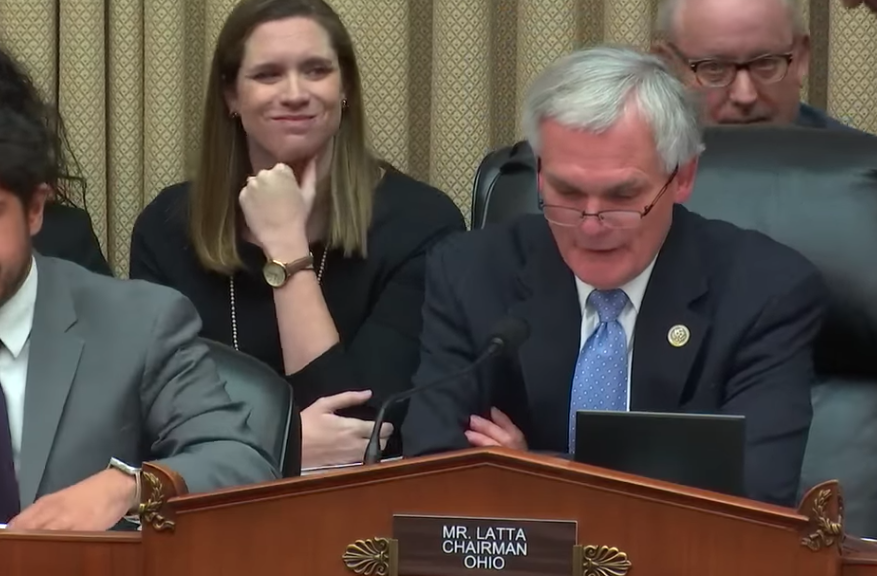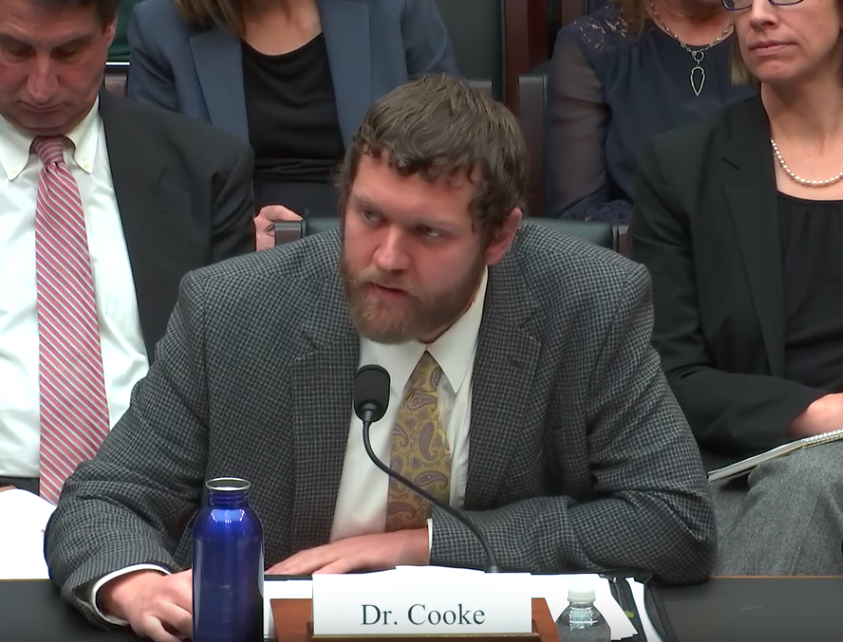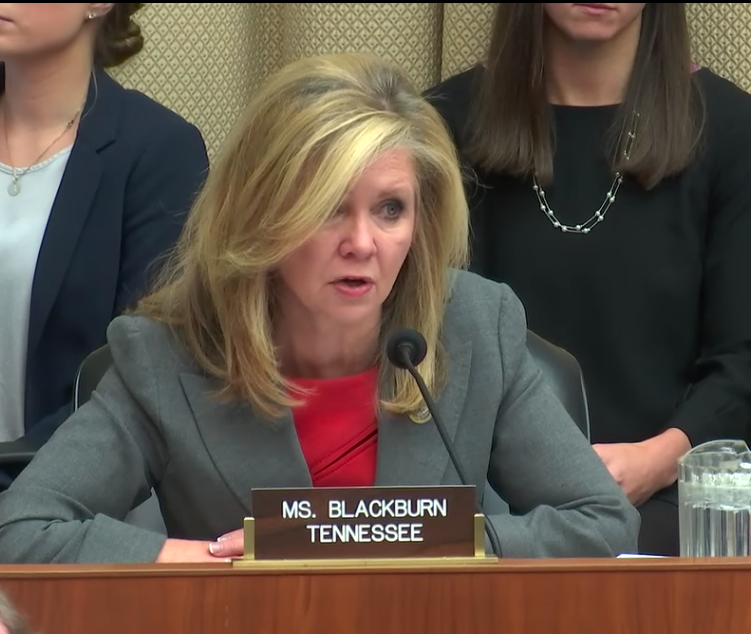December 20, 2017
Last week, the House Energy & Commerce Committee (E&C) launched its newest initiative in vehicle regulations with a December 12 hearing, titled “Update on the Corporate Average Fuel Economy Program (CAFE) and Greenhouse Gas Emissions Standards for Motor Vehicles.”
Two E&C subcommittees – Digital Commerce and Consumer Protection (DCCP) and Environment – convened the joint hearing to discuss conflicting federal and state regulations around vehicle fuel economy and greenhouse gas (GHG) emissions.
The joint hearing included testimony from the following witnesses:
- Mitch Bainwol, President and CEO, Alliance of Automobile Manufacturers (testimony)
- John Bozzella, President and CEO, Global Automakers (testimony)
- Dave Cooke, Senior Vehicles Analyst, Clean Vehicles Program, Union of Concerned Scientists (testimony)
- Forrest McConnell III, President, McConnell Honda & Acura, on behalf of The National Automobile Dealers Association (testimony)
 Republicans and auto industry representatives argued that the U.S. has three different sets of standards around fuel efficiency and greenhouse gas emissions that present economic and regulatory challenges for automakers – and ultimately drive prices up for consumers.
Republicans and auto industry representatives argued that the U.S. has three different sets of standards around fuel efficiency and greenhouse gas emissions that present economic and regulatory challenges for automakers – and ultimately drive prices up for consumers.
Meanwhile, Democrats and Cooke argued that these standards have actually reduced the costs of transportation for consumers – who end up paying less at the pump – while also reducing GHGs.
Three Cooks in the Kitchen
Under its authority as the nation’s primary regulator of motor vehicles, the National Highway Traffic Safety Administration (NHTSA) sets CAFE standards in order to push automakers towards increasing energy efficiency across their fleets.
Meanwhile, the Environmental Protection Agency (EPA) sets federal standards for GHG emissions that come out of those vehicles. And, although it is a state entity, the California Air Resources Board (CARB) has exercised significant influence over national standards by asserting its authority to set its own state standards for GHG emissions – an assertion that was supported by the Obama Administration.
The Obama Administration tried to alleviate regulatory confusion through its National Program, launched in 2009, which was intended to create a uniform set of regulations. The National Program aligned NHTSA and EPA’s efforts to collaborate when setting their respective standards for model years 2012-2016 and then 2017-2025. In turn, CARB committed to accepting vehicle fleets that meet these federal standards as compliant with its own.
As written, the National Program had well-defined timelines for reviewing and revising the joint standards based on economic and technological factors that could impact manufacturers’ ability to comply. This included the Midterm Evaluation for the 2017-2025 period, which would allow NHTSA and the EPA to review technological progress, consumer uptake of more fuel-efficient vehicles, and other factors.
As part of the Midterm Evaluation, EPA was slated to issue a determination and proposed rulemaking for model years 2022-2025 no later than April 1, 2018.
However, the EPA rushed out this release on January 13 of this year, shortly before Trump took office and more than a year ahead of schedule. It reported that the EPA and NHTSA would not need to reduce the ambitious fuel standard targets set by the Obama Administration.

This did not please Transportation Secretary Elaine Chao and EPA Administrator Scott Pruitt who, after they were confirmed, said their agencies would reconsider this determination. Adding to this tension, California Governor Jerry Brown (D) has repeatedly vowed to fight the Trump Administration’s rollback of environmental regulations.
This trifold regulatory structure has elicited concerns from Republicans and the industry that the fuel efficiency goals may place an undue financial burden on automakers that must research and manufacture vehicles that meet ambitious standards – which, as the argument goes, will ultimately force consumers to pay more for new vehicles.
As a result, the hearing was intended to kickstart a Republican effort to harmonize standards set by the EPA, NHTSA, and CARB.
The Argument for Harmonization
Those in favor of harmonizing the three sets of regulations argued that there is a significant need to review and revise the EPA’s final determination from earlier this year and create a truly unified standard for fuel economy and GHG emissions.
“These unnecessary regulatory costs help make the Obama One National Program the most expensive set of rules ever imposed on the auto industry, at a total cost of $209 billion,” said McConnell. He indicated that it will raise the average costs of vehicles by $3,000 and estimated that it would price over six million people entirely out of the new car market.
Cooke pushed back. “By seeking to renegotiate the terms of the One National Program, automakers are injecting uncertainty into the process, stymying progress and forestalling investment. This directly harms consumers and risks long-term impacts for the industry.”
“I have no idea where that $3,000 number is coming from,” he said. “That number is outdated.”

But the impact of consumers remains central to the argument from both sides as to whether the current regulatory structure should be preserved or modified.
“It all comes down to what is important for the consumer,” said Environment subcommittee chairman John Shimkus (R-IL). He noted in his opening statement that the EPA estimated total costs of the regulation to be in excess of $200 billion by 2025 – and that much of it would result in higher sticker prices for new vehicles.
Shimkus and other Republicans suggested that the increased fuel efficiency standards forced automakers to invest in complying with three different sets of regulations rather than research and development for new technologies.
“What’s happening here is that we’re having to waste time and resources on compliance when we ought to devote that time and resources to innovation that improves fuel economy,” Bozzella agreed. “What we want to make sure is that every dollar is spent on improving fuel economy [rather than compliance].”
DCCP ranking member Jan Schakowsky (D-IL) dissented, arguing instead that automakers have the technology and flexibility to meet the standards that have already been set by the EPA – and that they would benefit consumers in the long run.
“When is something counterproductive?” asked Rep. Marsha Blackburn (R-TN).

She noted that automakers based in Tennessee want “realistic standards” where they can meet the expectations of American consumers for vehicles that can be considered safe. “I think this is time for us to talk about what is realistic, what is achievable, and what will deliver a safe product for the American consumer,” she said.
“Strong standards have a more immediate result for consumers: big savings at the pump,” she stated. Meeting these standards is not only achievable, Schakowsky said, but has been found to be cheaper than previously believed.
Cooke said that EPA and NHTSA’s models confirmed that the costs for increasing fuel efficiency have come down and that a “vast body of evidence” shows that the technology is available and viable for manufacturers to continue improving fuel economy.
Responding to a question from Rep. Doris Matsui (D-CA), Cooke cited an Indiana University research project that was funded by an Auto Alliance grant, Cooke said, “hundreds of thousands of jobs are created as a result of these standards.”
Moving into next year, CAFE and GHG emissions harmonization are expected to be a significant area of focus for House Energy & Commerce. Two members of the committee, Rep. Fred Upton (R-MI) and Rep. Debbie Dingell (D-MI), co-introduced a bill (H.R. 4011) in October to harmonize the credit programs at EPA and NHTSA, since automakers can technically be in compliance with EPA and be fined by NHTSA due to its statutory limits on when credits can be used.
Sen. Roy Blunt introduced a companion bill (S. 1273) in the upper chamber this summer, which currently has a group of 5 bipartisan cosponsors.
“We think it’s a terrific bill. We think that the impact of the bill is to reduce regulatory friction, and by reducing regulatory friction, that allows for compliance strategies that make sense,” said Bainwol. He said that this would reduce the cost of producing cars and increase the ability of consumers to purchase them.

 Republicans and auto industry representatives argued that the U.S. has three different sets of standards around fuel efficiency and greenhouse gas emissions that present economic and regulatory challenges for automakers – and ultimately drive prices up for consumers.
Republicans and auto industry representatives argued that the U.S. has three different sets of standards around fuel efficiency and greenhouse gas emissions that present economic and regulatory challenges for automakers – and ultimately drive prices up for consumers.



